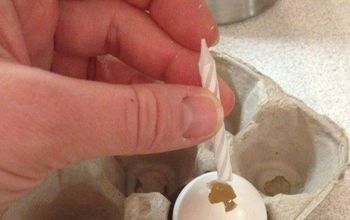What is best way to remove textured ceilings?
Related Discussions
Vinyl plank flooring vs pergo (laminate)
I currently have stinky dirty carpeting in my living room and I want to replace it with a durable flooring that can stand up to dogs and kids.
How to remove popcorn ceiling that has been painted?
Does having a paint over a popcorn ceiling change how I'd remove the popcorn ceiling?
How to apply peel and stick wallpaper?
I want to spruce up my walls with peel-and-stick wallpaper. Has anyone used this before and can advise me as to how to apply it properly?
How to stain wood floor?
I've heard staining is a good technique for updating floors. So how do I stain my wood floor?

spray with warm sudsy water, scrape, take a nap...scrape again!
Its called Stomping. In the 1980s we actually used a device ..put in the drywall to stomp the ceiling..Up under it...it isnt finished..It saved time and money..No sanding them down..So the only way to fix it is replace your ceiling drywall and have it sanded and taped to todays standard. I inherited the same ceilings..I am just keeping them..unfortunately. Its not painted or the spray material..its drywall mud.
If the ceiling is the same mud used to texture the walls, you can sand the texture off. Keep the sander moving so you don't damage the sheet rock underneath the texture mud. Tedious but doable.
https://www.hometalk.com/categories/remodeling-renovating/ceiling/popcorn-ceilings
Wait! Please get the texture tested for asbestos! It could just be drywall mud but textured walls and ceilings installed prior to 1986 are very likely to be Artex.
Until the mid-1980s, the Artex coating was made with white asbestos to strengthen it. Therefore old Artex manufactured by Artex Ltd. will contain asbestos while Artex coatings applied after 2000 may or may not contain asbestos. It is also worth noting that the texture is only harmful when in a powder form, i.e., being sanded, and poses no risk while it is undisturbed (without drilling holes or more substantial practices) on ceilings or walls and covered with emulsion paint.
Removing even more modern non-asbestos coatings can expose the operator to hazardous dust particles. Older coatings, containing asbestos, pose a particularly serious hazard. Inhaling microscopic asbestos fibers can cause asbestosis, a fibrosing lung disease; pleural mesothelioma, a cancer of the lining (pleura) of the lung; and peritoneal mesothelioma, a cancer of the lining (peritoneum) of the abdomen. Professional expertise to identify the presence of asbestos is recommended. Only those trained to remove the coating or working with a surface covered with the substance should do so wearing effective dust-proof protective clothing and masks and the area being worked on should be sealed off.
A permit is required to remove and dispose of asbestos. Disposing of asbestos without the permit is a punishable crime and can lead to prison time.